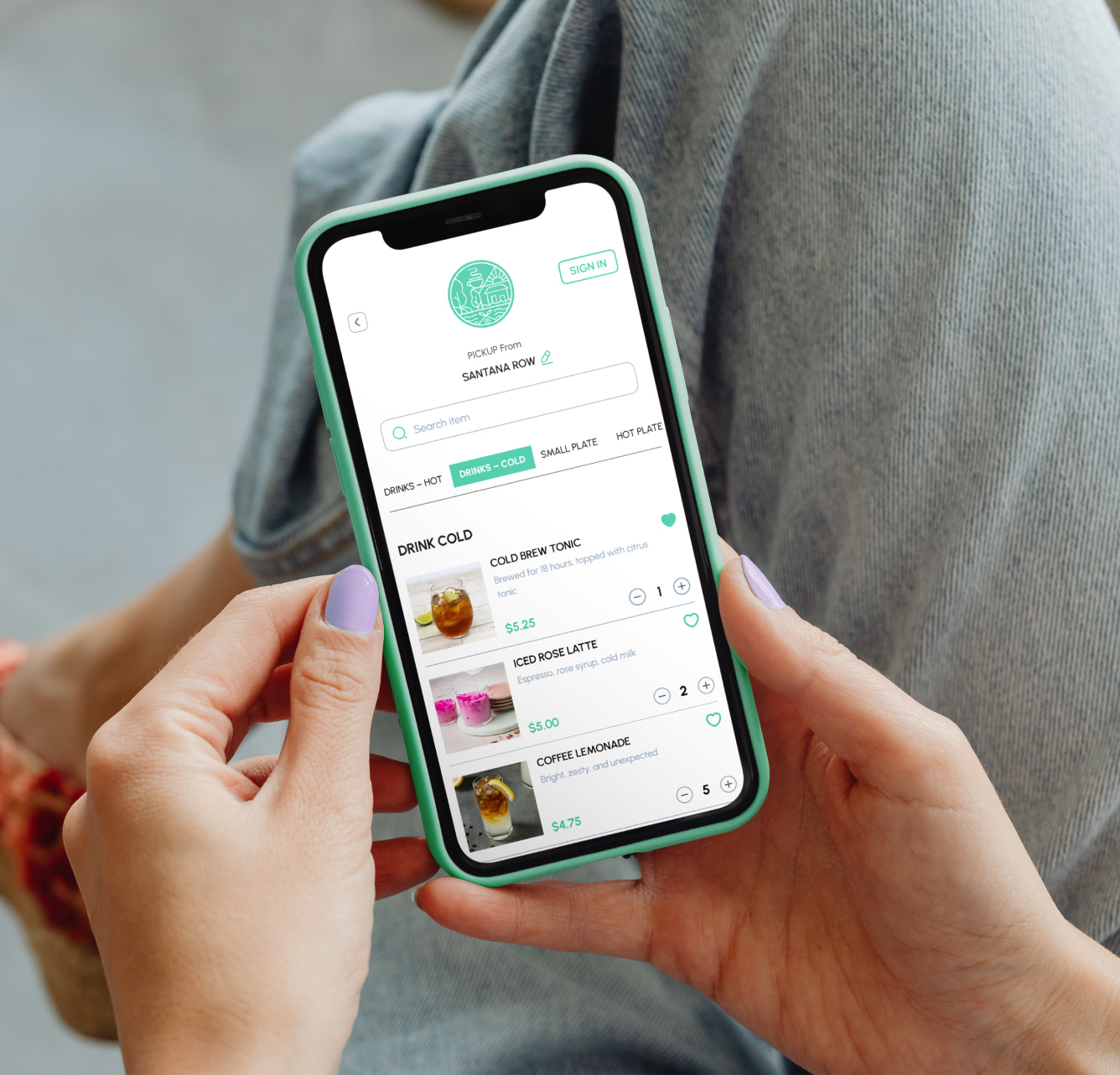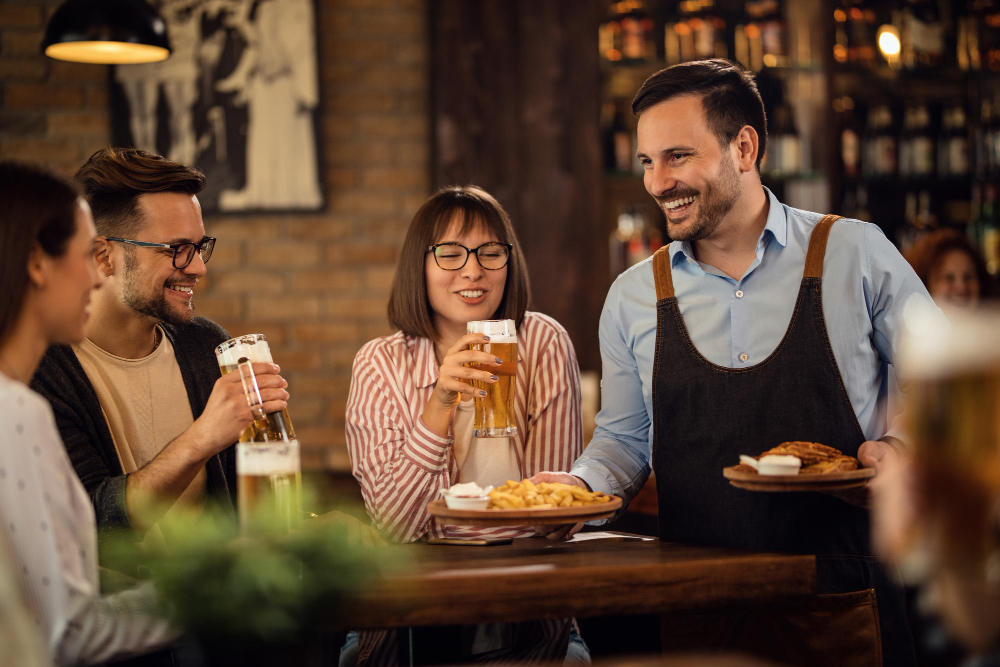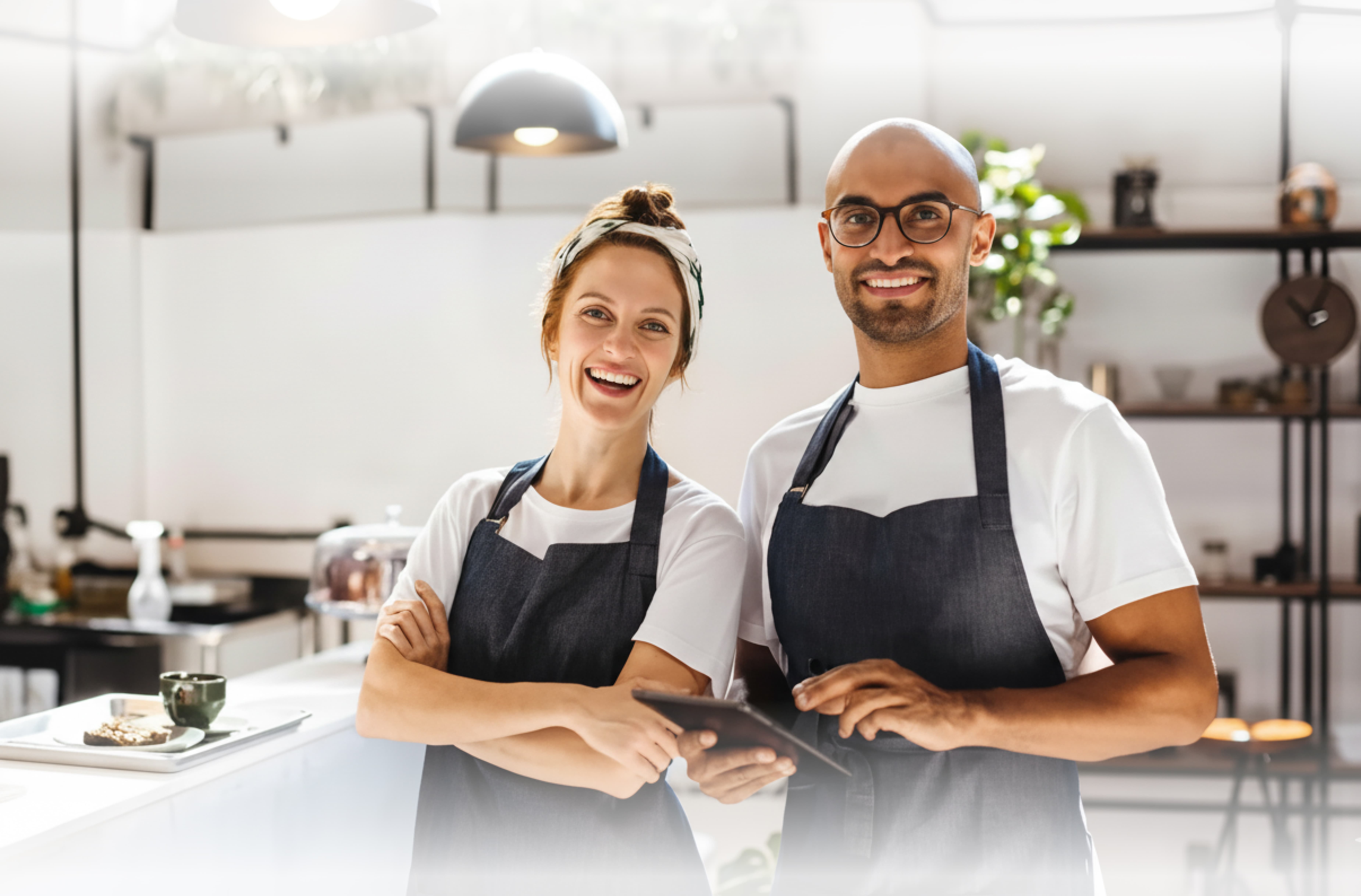Key Takeaways
In today's digital-first world, your customers are scrolling through social media feeds while deciding where to eat tonight. If you're feeling overwhelmed by the ever-changing landscape of social platforms and marketing strategies, you're not alone. Many restaurant owners struggle to cut through the noise and make their social media efforts truly pay off. For a comprehensive approach to digital marketing for restaurants, understanding the role of social media is crucial.
The truth is, effective restaurant social media marketing isn't just about posting beautiful food photos—it's about creating a comprehensive strategy that builds your brand, engages your audience, and ultimately drives more customers through your doors or to your online ordering platform. This includes understanding the importance of social media marketing and promotion to attract and retain customers.
This guide will walk you through actionable restaurant social media marketing tips that can transform your online presence and boost your bottom line in 2025. Whether you're just starting out or looking to refine your existing strategy, these proven approaches will help you stay ahead of the competition and connect with customers in meaningful ways. Remember, the goal is to make your customers hungry for more and keep them coming back.
Why Social Media Marketing is Essential for Restaurants
Social media has evolved from a casual networking tool to an indispensable marketing channel for restaurants. Here's why you can't afford to ignore it in 2025:
- Direct Customer Access: With over 4.9 billion social media users worldwide, your potential customers are already there, actively seeking dining inspiration.
- Cost-Effective Marketing: Compared to traditional advertising, social media allows you to reach targeted audiences at a fraction of the cost—sometimes even for free.
- Builds Brand Identity: Your social platforms give personality to your restaurant, showcasing not just your food but your values, atmosphere, and unique story.
- Drives Immediate Action: From "Order Now" buttons on Instagram to location tags that provide directions, social media creates direct pathways to conversion.
- Customer Insights: Social platforms provide valuable data about your audience, helping you refine your offerings and marketing approach.
According to recent industry research, 75% of people have purchased a product because they saw it on social media, and restaurants with active social media presences report up to 20% higher sales compared to those without a strong online presence. For restaurants specifically, 90% of diners research a restaurant online before visiting—with social media being a primary source of information. This is why restaurant marketing is more crucial now than ever.
How to Develop a Winning Restaurant Social Media Strategy
Define Your Goals and Target Audience
Start by identifying what you want to achieve with your restaurant social media marketing efforts:
- Increase brand awareness and reach new potential customers
- Drive more traffic to your commission-free online ordering system
- Boost engagement with your existing customer base
- Showcase new menu items or special promotions
- Highlight your restaurant's unique atmosphere and experience
Next, define your target audience with specificity. Consider demographics like age, location, and income level, but also psychographics such as dining preferences, lifestyle choices, and values. Are you targeting busy professionals looking for quick lunch options? Food enthusiasts seeking unique culinary experiences? Families who need kid-friendly dining solutions? Understanding your audience is key to creating effective marketing strategies to reach millennials and other demographics.
Select the Best Social Media Platforms for Your Restaurant
Not all social media platforms are created equal when it comes to restaurant marketing. Here's a breakdown of the most effective platforms for restaurants in 2025:
- Instagram: The gold standard for food-related content, Instagram's visual nature makes it perfect for showcasing mouthwatering dishes, behind-the-scenes content, and your restaurant's ambiance. Instagram Stories and Reels offer additional ways to engage followers with time-limited content.
- TikTok: With its explosive growth and algorithm that can make content go viral quickly, TikTok is ideal for reaching younger demographics. Short, creative videos showcasing food preparation, staff personalities, or unique restaurant features perform exceptionally well.
- Facebook: Still valuable for reaching a broad audience, particularly those aged 30+. Facebook excels for event promotion, community building, and detailed posts about special offers or menu changes.
- Twitter (X): Best for quick updates, responding to customer service issues, and joining trending conversations in the food world.
- Pinterest: Often overlooked but powerful for restaurants, Pinterest users often plan meals and dining experiences well in advance, making it excellent for long-term brand building.
Rather than trying to maintain a presence on every platform, choose 2-3 that best align with your target audience and content capabilities. For most restaurants, Instagram and either TikTok or Facebook should be your primary focus. Utilizing zero-dollar marketing strategies can also help promote your restaurant website and social media presence without breaking the bank.
Create Consistent, Engaging Content (Photos, Videos, Stories)
High-quality content is the cornerstone of successful restaurant social media marketing. In 2025, these content types are proving most effective for restaurants:
- Food Photography: Invest in professional food photography at least quarterly, supplemented with well-lit, carefully composed smartphone photos. Capture dishes from multiple angles, with particular emphasis on steam, texture, and pour shots that create sensory appeal.
- Short-Form Videos: Create 15-60 second videos showing food preparation, plating techniques, or chef interviews. These perform exceptionally well on Instagram Reels and TikTok.
- Stories: Use Instagram and Facebook Stories for time-sensitive content like daily specials, limited-time offers, or quick behind-the-scenes glimpses.
- Carousel Posts: Create multi-image posts that tell a story, such as the journey of a signature dish from ingredients to finished plate.
- Text Overlays: Add informative or entertaining text to images and videos to increase engagement, especially for users browsing with sound off.
Maintain visual consistency by developing a recognizable aesthetic for your restaurant's social media. This might include a specific color palette, consistent filters, or a particular photography style that reflects your brand identity. Avoid common mistakes that can hurt your restaurant's brand image and focus on building a strong online presence.
Plan your content mix to include approximately:
- 40% promotional content (menu items, specials, events)
- 30% educational content (ingredient spotlights, cooking tips, food facts)
- 20% entertainment (staff features, humor, restaurant stories)
- 10% curated content (customer photos, industry news, community highlights)
Incorporate User-Generated Content and Influencer Collaborations
User-generated content (UGC) is powerful social proof that builds trust and authenticity. Encourage customers to share their experiences by:
- Creating a branded hashtag and promoting it on table tents, receipts, and menu inserts
- Running photo contests that incentivize customers to share their dining experiences
- Featuring customer photos on your own feed (with permission) and tagging the original creators
- Adding Instagram-worthy elements to your restaurant, such as unique plating, distinctive decor, or photo backdrops
For influencer marketing, consider working with local food bloggers, Instagram foodies, or community figures rather than pursuing expensive macro-influencers. These micro-influencers (typically with 5,000-50,000 followers) often have higher engagement rates and more dedicated local followings. Building a strong online presence is crucial for attracting and partnering with influencers effectively.
When approaching influencer collaborations:
- Research potential partners thoroughly to ensure their audience and values align with your restaurant
- Start with invitation-based experiences where influencers visit in exchange for content creation
- Provide clear guidelines about what you'd like highlighted, but allow creative freedom
- Track the performance of influencer posts to determine ROI and inform future collaborations
Use Paid Advertising to Amplify Reach
While organic reach is valuable, paid social media advertising allows you to target specific demographics and significantly expand your visibility. Effective paid strategies for restaurants include:
- Geotargeted Ads: Target users within a specific radius of your restaurant, particularly during key dining decision times
- Lookalike Audiences: Create ads targeting users who share characteristics with your existing customers
- Retargeting: Show ads to users who have previously visited your website or engaged with your content
- Carousel Ads: Showcase multiple menu items or aspects of your restaurant experience in a single ad
- Event Promotion: Boost posts about special events, holiday menus, or limited-time offerings
Start with a modest budget ($100-300 per month) and test different ad formats and targeting options to determine what drives the best results for your restaurant. Focus on conversion-oriented calls to action like "Order Now," "Make a Reservation," or "View Menu" to drive measurable business outcomes.
Engage Your Community and Respond to Reviews
Social media is fundamentally about building relationships. Restaurants that actively engage with their online communities see significantly higher loyalty and word-of-mouth promotion. Best practices include:
- Responding to comments and messages within 24 hours (ideally within 2-4 hours)
- Acknowledging and thanking customers who tag your restaurant in their posts
- Addressing negative feedback promptly, professionally, and (when appropriate) publicly
- Creating conversation-starting posts that invite comments and interaction
- Engaging with local community content and supporting fellow businesses
Review management is particularly crucial for restaurants. Monitor reviews across platforms (Google, Yelp, Facebook, etc.) and respond thoughtfully to both positive and negative feedback. For negative reviews:
- Acknowledge the customer's experience without becoming defensive
- Apologize for any shortcomings and explain (briefly) how you're addressing the issue
- Invite the customer to contact you directly to resolve the situation
- Follow up on promises made and, when appropriate, request an updated review
Remember that how you handle criticism online speaks volumes about your restaurant's values and customer service approach.
Leverage Interactive Features and Live Streaming
Interactive content generates 2x more engagement than static posts. Take advantage of platform-specific features like:
- Instagram/Facebook Polls: Ask followers to vote on new menu items, choose between two dishes, or share preferences
- Instagram Story Questions: Host Q&A sessions about your restaurant, ingredients, or cooking techniques
- Live Streaming: Broadcast special events, cooking demonstrations, or behind-the-scenes kitchen tours
- Countdown Stickers: Build anticipation for new menu launches, special events, or limited-time offers
- Interactive Filters: Create branded AR filters that customers can use when visiting your restaurant
Live streaming deserves special attention as it creates authentic, real-time connections with your audience. Consider regular live sessions such as:
- Weekly chef demonstrations of popular dishes or cooking techniques
- Virtual kitchen tours showing food preparation and safety practices
- Q&A sessions with restaurant owners, chefs, or sommeliers
- Special announcement broadcasts for major news or menu changes
Promote live streams in advance and save the recordings to your profile for followers who couldn't attend in real-time.
Track Performance and Optimize Your Strategy
Data-driven decision making separates successful restaurant social media marketing from ineffective efforts. Establish a regular review process to track key metrics including:
- Engagement Rate: The percentage of your audience that interacts with your content
- Reach and Impressions: How many unique users see your content and how often
- Click-Through Rate: The percentage of viewers who click on links to your website or ordering platform
- Conversion Rate: How many social media visitors complete desired actions (orders, reservations, etc.)
- Audience Growth: Net new followers over time
- Content Performance: Which types of posts generate the most engagement and conversions
Use platform-specific analytics tools (Instagram Insights, Facebook Analytics, etc.) alongside Google Analytics to track the customer journey from social media to your website or ordering system.
How to Market a Restaurant on Social Media: Practical Tips
Beyond the foundational strategy, these tactical approaches will help you maximize your restaurant's social media impact:
Run Contests and Promotions
Social media contests can rapidly increase engagement, followers, and even direct sales when executed properly. Effective contest formats for restaurants include:
- Photo Contests: Ask customers to share photos of their meals at your restaurant with a specific hashtag
- Tag-a-Friend Giveaways: Encourage followers to tag friends who would enjoy your restaurant for a chance to win a meal for two
- Caption Contests: Post an interesting food or restaurant image and ask followers to provide creative captions
- User-Generated Recipe Ideas: Invite followers to suggest creative uses for signature ingredients or dishes
- Check-In Promotions: Offer special discounts for customers who check in at your location on social platforms
When running contests, always:
- Clearly state the rules, entry period, and how winners will be selected
- Ensure your contest complies with platform-specific promotion guidelines
- Offer prizes that reflect your brand quality (gift cards, dining experiences, etc.)
- Follow through promptly with winner announcements and prize delivery
- Measure the contest's impact on key metrics like follower growth and engagement
Spotlight Staff and Vendors to Humanize Your Brand
Restaurants are fundamentally human businesses, and showcasing the people behind your operation creates emotional connections with customers. Consider regular content series such as:
- Staff Spotlights: Feature team members with brief interviews about their role, favorite menu items, or interesting hobbies
- Chef's Corner: Highlight your culinary team's expertise, inspiration, and passion for food
- Vendor Visits: Showcase local farmers, bakers, or specialty producers who supply your ingredients
- Day-in-the-Life: Document the restaurant experience from opening preparations to closing procedures
- Customer Appreciation: With permission, highlight regular customers and their stories
This content humanizes your brand, demonstrates your values (particularly if you emphasize local sourcing or sustainable practices), and creates multiple dimensions to your restaurant's story beyond just the food itself.
Capitalize on Seasonal Trends and Holidays
Aligning your content with seasonal themes and holidays creates timely relevance and taps into existing conversations. Develop a restaurant social media marketing calendar that includes:
- Major Holidays: Plan special content for Christmas, Valentine's Day, Mother's Day, etc.
- Food-Related Observances: National Pizza Day, International Coffee Day, World Vegetarian Day, etc.
- Seasonal Ingredients: Highlight menu changes that incorporate seasonal produce
- Local Events: Create content tied to community festivals, sporting events, or celebrations
- Pop Culture Moments: When appropriate, participate in trending topics or memes
Plan this contentwell in advance, but maintain flexibility to respond to unexpected trends or events. Create a content bank of seasonal images and videos during each season that can be used for future years' marketing.
Maintain a Cohesive Brand Voice and Visual Identity
Consistency builds recognition and trust. Develop clear guidelines for your restaurant's social media presence including:
- Visual Elements: Color palette, typography, filter presets, and composition styles
- Voice and Tone: Whether your brand is playful, sophisticated, educational, or conversational
- Content Themes: Recurring series or content types that followers come to expect
- Posting Cadence: Consistent scheduling that sets appropriate expectations
- Response Protocols: How team members should engage with followers
Document these guidelines for anyone who might manage your social media accounts to ensure a seamless experience for followers regardless of who's posting.
Top Social Media Marketing Tools for Restaurants in 2025
The right tools can dramatically improve your efficiency and effectiveness. Here are the most valuable social media tools for restaurants in 2025:
When selecting tools, prioritize those that integrate well with your existing systems and offer features specifically relevant to restaurant marketing, such as location tagging, menu integration, or reservation capabilities.
Why Choose Restolabs for Your Restaurant's Online Ordering and Social Media Integration
While effective social media marketing drives awareness and engagement, converting that interest into sales requires seamless integration with your ordering system. Restolabs offers a commission-free online ordering system that perfectly complements your social media efforts by:
- Direct Social Media Integration: Add "Order Now" buttons to your Instagram profile, Facebook page, and other social channels that connect directly to your branded ordering platform
- Complete Brand Consistency: Maintain your restaurant's visual identity from social media posts through to the ordering experience
- Customer Data Ownership: Unlike third-party delivery apps, retain valuable customer information for remarketing and loyalty programs
- Promotional Flexibility: Easily create and track special offers promoted through social media channels
- Analytics Integration: Measure the direct impact of social media campaigns on online ordering conversion rates
By combining strategic social media marketing with Restolabs' powerful social media and POS integrations, restaurants can create a seamless customer journey from discovery to purchase, maximizing the ROI of their digital marketing efforts.
Schedule a demo to see how Restolabs can boost your restaurant sales through integrated social media and online ordering solutions.
Frequently Asked Questions
Instagram remains the top platform for restaurants due to its visual nature and food-focused audience. TikTok has become essential for reaching younger demographics with short-form video content, while Facebook continues to be valuable for community building and reaching customers aged 30+. For most restaurants, focusing on Instagram as your primary platform, with either TikTok or Facebook as secondary channels, will yield the best results. Pinterest is also worth considering for restaurants with distinctive visual appeal or those targeting event planning and special occasions.
Posting frequency should balance consistency with quality. For Instagram, 4-5 posts per week plus daily Stories is ideal. On TikTok, aim for 3-4 videos weekly to maintain algorithm visibility. Facebook requires less frequent posting—2-3 times per week is sufficient. The key is maintaining a regular cadence rather than posting sporadically. Quality always trumps quantity, so it's better to post excellent content less frequently than mediocre content daily. Use a content calendar to plan ahead and ensure consistent posting even during busy periods.
Effective restaurant contests include photo challenges (asking customers to share their dining experiences), tag-a-friend giveaways (to expand reach to new potential customers), and check-in promotions (encouraging in-person visits). When running contests, clearly communicate the rules, entry period, and prize details. Ensure compliance with each platform's promotion guidelines. Measure success by tracking new followers, engagement rates, and conversion metrics like website visits or reservations. The most successful contests typically offer experiential prizes like chef's table dinners or cooking classes rather than simple discounts.


.gif)



.png)




